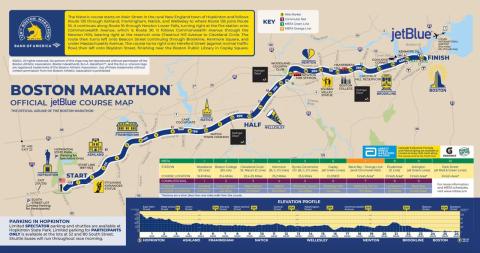
The Boston Marathon is one of the most prestigious and challenging races in the world, renowned for its historic significance and unique course. For first-time runners preparing to take on this iconic event, the key to success lies in understanding the course and preparing accordingly. If you take away just one piece of advice for your Boston Marathon debut, let it be this: get ready for the hills. Here’s a comprehensive guide to help you tackle the Boston Marathon with confidence and achieve your best performance.
The Boston Marathon is famous for its challenging terrain, particularly the series of hills that characterize the latter part of the race. The course runs from Hopkinton to Boston, covering a distance of 26.2 miles. Unlike many marathons, Boston features a hilly profile with a notable downhill start followed by several climbs, culminating in the infamous Heartbreak Hill.
1. The Downhill Start: The race begins with a significant downhill section in the first few miles. While it may feel exhilarating to start fast, be cautious. Overexerting yourself early on can lead to fatigue and potential injury later in the race. Focus on maintaining a controlled pace and use this section to find your rhythm.
2. The Hills: The Boston course includes several hills, with the most challenging being Heartbreak Hill, located between miles 20 and 21. This is where many runners experience their toughest moments. The key to handling these hills is to prepare both physically and mentally.

1. Hill Training: Incorporate hill workouts into your training regimen. Find local hills or use a treadmill with an incline feature to simulate the Boston terrain. Focus on building strength and endurance with uphill repeats and downhill running to condition your legs for the varied elevation.
2. Long Runs with Hills: Include long runs that feature hilly routes to mimic race conditions. This will help you adapt to running on inclines and declines, improving your ability to handle the Boston course.
3. Strength Training: Strengthen your core, glutes, and legs to support your running mechanics on hilly terrain. Exercises like squats, lunges, and core workouts can enhance your stability and power, which is crucial for navigating Boston’s hills.
1. Pacing Strategy: Plan your pacing strategy carefully. Given the hilly nature of the course, it’s important to start conservatively and save energy for the later stages of the race. Use the first half of the race to establish a steady pace and save some strength for the challenging hills ahead.

2. Nutrition and Hydration: Fuel your body adequately before and during the race. Ensure you’re well-hydrated and have a nutrition plan that includes energy gels or snacks for the marathon. Pay attention to electrolyte balance, especially as you tackle the hills.
3. Mental Preparation: Prepare yourself mentally for the challenging sections of the course. Visualize running up Heartbreak Hill and practice positive self-talk. Mental resilience is key to overcoming the physical and psychological demands of the race.
4. Race Logistics: Familiarize yourself with race day logistics, including transportation to the start line, gear check, and the course layout. Arrive early to avoid last-minute stress and ensure you’re ready to go when the race begins.
1. Conserve Energy: During the early miles, focus on maintaining a steady and controlled pace. Save your energy for the hills and avoid the temptation to push too hard at the start.
2. Tackle the Hills Smartly: When approaching a hill, shorten your stride and increase your cadence. Lean slightly forward and use your arms to help drive your legs. On downhill sections, maintain control and avoid overstriding to prevent injury.
3. Stay Positive: As you reach Heartbreak Hill and beyond, remind yourself of your training and the progress you’ve made. Celebrate small victories and stay focused on your goal.

The Boston Marathon is a remarkable and demanding race, but with proper preparation, you can tackle its challenges and achieve a rewarding finish. By focusing on hill training, developing a smart pacing strategy, and mentally preparing for the course, you’ll be well-equipped to handle the unique demands of Boston. Embrace the challenge, trust in your training, and enjoy the experience of running one of the world’s most iconic marathons.
Discover More Content





